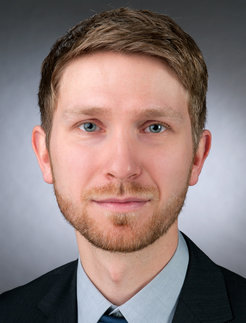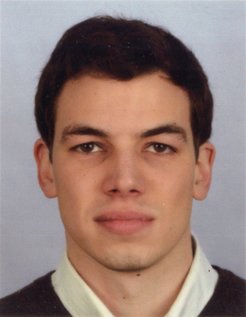Helmholtz Award 2018 for Axel Beyer and Lothar Maisenbacher
Scientists from the Max Planck Institute of Quantum Optics receive the Helmholtz Award for high precision laser spectroscopy of atomic hydrogen, confirming the surprisingly small value of the proton radius determined from muonic hydrogen.

Hydrogen is the simplest of all chemical elements. The theory of quantum electrodynamics predicts the energy levels of this system with 12 digits of precision. Because of this, hydrogen plays a key role in our understanding of nature. Since the theoretical description depends on fundamental constants such as the Rydberg constant and the proton charge radius, comparisons between theory and experiment allows determining the values of these constants. With a sufficient number of measurements these values are obtained in several ways and their comparison comprises a test of quantum electrodynamics.
In this way laser spectroscopy of muonic hydrogen conducted in 2010 yielded a value for the proton charge radius that was significantly smaller than the one obtained from regular hydrogen (Nature 466, 213 (2010)). This discrepancy and its origin have attracted much attention in the scientific community, with even extensions of the so-called standard model of physics being discussed. “In order to solve this ‘proton puzzle’, new individual measurements with high precision, and, if possible, using different experimental approaches are necessary,” explains Lothar Maisenbacher, doctoral candidate on the experiment.

In order to determine both the Rydberg constant and the proton charge radius from spectroscopy of regular hydrogen, two different transition frequencies need to be measured. The by far sharpest resonance, the so-called 1S-2S transition, serves as a corner stone in this determination. Its frequency has been measured, in 2011, to 15 digits by the MPQ team (Phys. Rev. Lett. 107, 203001 (2011)). This high precision was made possible not least by the invention of the frequency comb, for which Professor Hänsch was awarded the Nobel Prize in Physics in 2005. For the second frequency measurement needed, the MPQ team chose the so-called 2S-4P transition, which connects the metastable 2S state with the much shorter lived 4P state.
While optimizing measurement and evaluation techniques, the physicists managed to determine the frequency of the 2S-4P transition with an uncertainty of 2.3 kHz. This corresponds to a fractional uncertainty of 4 parts in 1012, making this measurement almost as precise as all previous measurements on regular hydrogen combined. Both the Rydberg constant and the proton radius deduced from this measurement are in good agreement with the values from muonic hydrogen, but disagree by 3.3 standard deviations with the hydrogen world data (Science, 6 October 2017). “Our results indicate that the discrepancies may go back to uncertainties in previous experiments,” says Prof. Thomas Udem, the project leader. “However, in order to find a comprehensive explanation, additional measurements with perhaps even higher precision are needed.” Olivia Meyer-Streng













